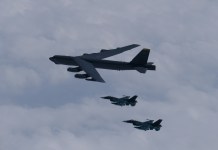The Kremlin confirmed that Russian President Vladimir Putin will visit North Korea for two days starting Tuesday. This is Putin’s first trip to the isolated nation in more than two decades, which confirms deepening ties between the two neighbors. After North Korea, Putin will travel to Hanoi, Vietnam, for another two-day trip.
North Korea Arming ‘Big Brother’ Russia?
The debris scattered across Ukraine speaks volumes – Russia’s assault isn’t just fueled by its own firepower. A bombshell report from the Pentagon’s Defense Intelligence Agency (DIA) has uncovered North Korea’s clandestine role in sustaining Moscow’s military onslaught, supplying ballistic missiles to prop up the Kremlin’s warfare.
Since November 2023, the hermit kingdom has been stealthily shipping a steady stream of artillery rounds and ballistic missiles to its new ally in the Ukraine conflict.
A recent report from the Defense Intelligence Agency (DIA) in Washington has shed light on the involvement of North Korea in supplying ballistic missiles to Russia, particularly in the context of the ongoing conflict with Ukraine.
A declassified analysis of missile debris scattered across Ukraine provides concrete evidence of Russia’s utilization of ballistic missiles sourced from North Korea. Recently, the Pentagon’s intelligence agency released a summary of this report in an unclassified format.
What Does The DIA Report Say?
According to the DIA report, since November 2023, North Korea, formally known as the Democratic People’s Republic of Korea (DPRK), has been supplying ballistic missiles to Russia to assist Moscow in its conflict with Ukraine.
This collaboration between North Korea and Russia has deepened over time, with significant diplomatic exchanges and visits between the leaders of both nations.
Following Russia’s invasion of Ukraine in February 2022, North Korea was one of only four nations aligned with Russia to oppose a UN resolution condemning the invasion (alongside Russia, Syria, Belarus, and Nicaragua also voted against the resolution.)
In September 2023, Kim Jong-un made his first trip abroad since 2019, visiting Russian President Vladimir Putin and touring Russian military facilities. Moscow subsequently announced Putin’s intention to reciprocate with a visit to the DPRK, marking his first visit to the country.
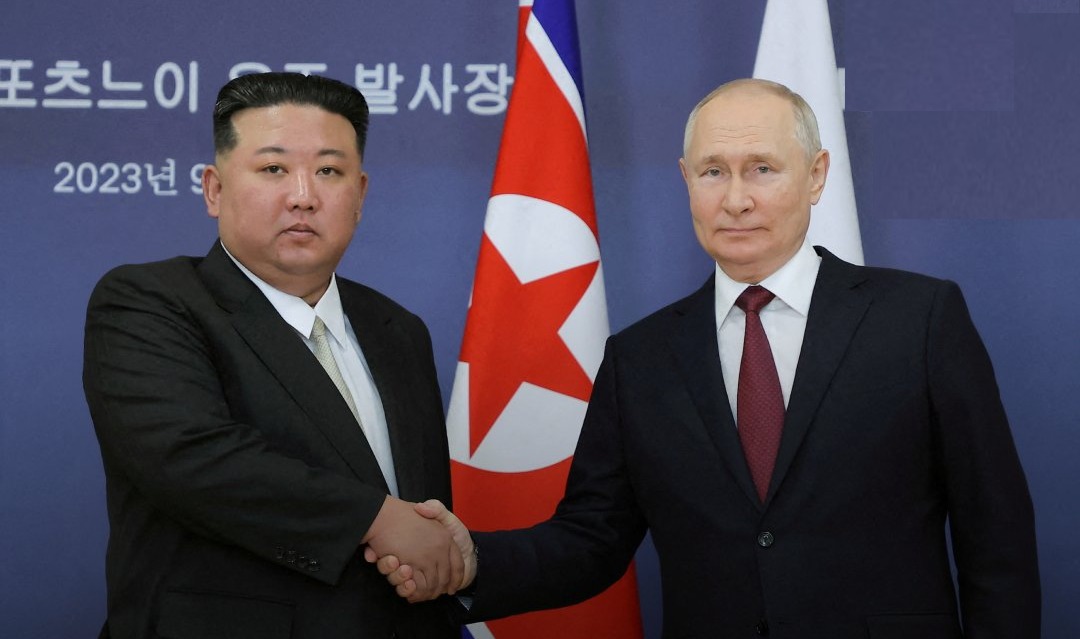
Exchange Between North Korea & Russia
This illicit exchange is a grim manifestation of the deepening ties between the two pariah states.
According to U.S. intelligence officials, Pyongyang has deepened its collaboration with Moscow by offering direct material assistance, which includes supplying at least three million artillery rounds and dozens of ballistic missiles to sustain Russia’s military campaign in Ukraine. These North Korean missiles have been utilized by Russia to target various sites in Ukraine, including civilian areas, resulting in casualties among civilians.
For North Korea, the benefits extend beyond mere arms trading. By observing the performance of its missiles on Ukraine’s battlefields, the regime gains invaluable insights into the effectiveness of its latest technological marvels against advanced missile defense systems. A deadly real-world testing ground for its burgeoning arsenal.
But this alliance isn’t just about military cooperation. As the West tightens the sanctions noose around both countries, they’ve found solace in each other’s embrace. Russia has been North Korea’s diplomatic shield at the UN, vetoing enforcement measures while Pyongyang props up Moscow’s faltering war machine.
The DIA Report Analysis
Since 2019, North Korea has conducted flight tests of solid-propellant short-range ballistic missiles (SRBMs) on numerous occasions. These missiles represent an advancement over Pyongyang’s Soviet-era liquid-propellant systems, with North Korea emphasizing their improved accuracy and ability to bypass missile defenses.
A recent analysis by the DIA compares publicly available images of missile debris recovered in Kharkiv, Ukraine, after the January 2, 2024, attack with images from North Korean state media depicting Kim Jong Un visiting a ballistic missile factory in 2023.
The DIA report concludes that the debris found in Ukraine closely resembles the missiles depicted in the North Korean state media images.
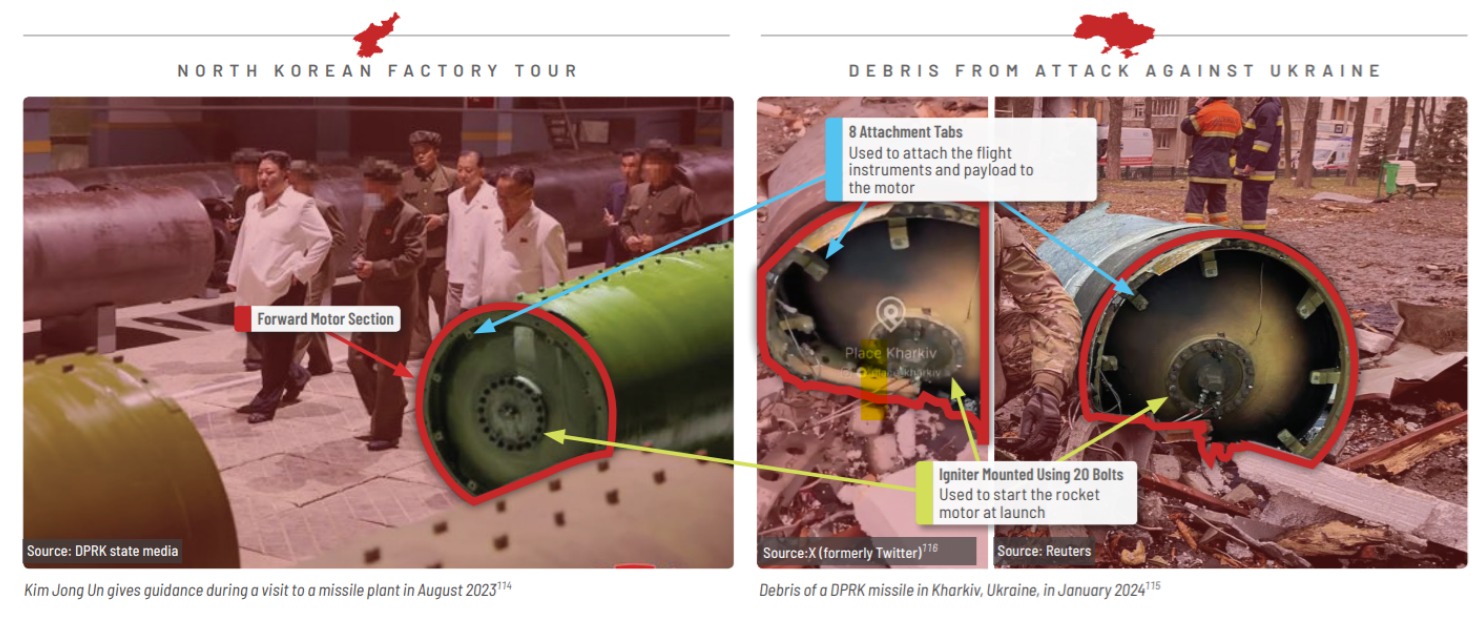
The forward motor section depicted in an image of a North Korean system on the left corresponds to the physical attributes displayed in two images of missile debris on the right.
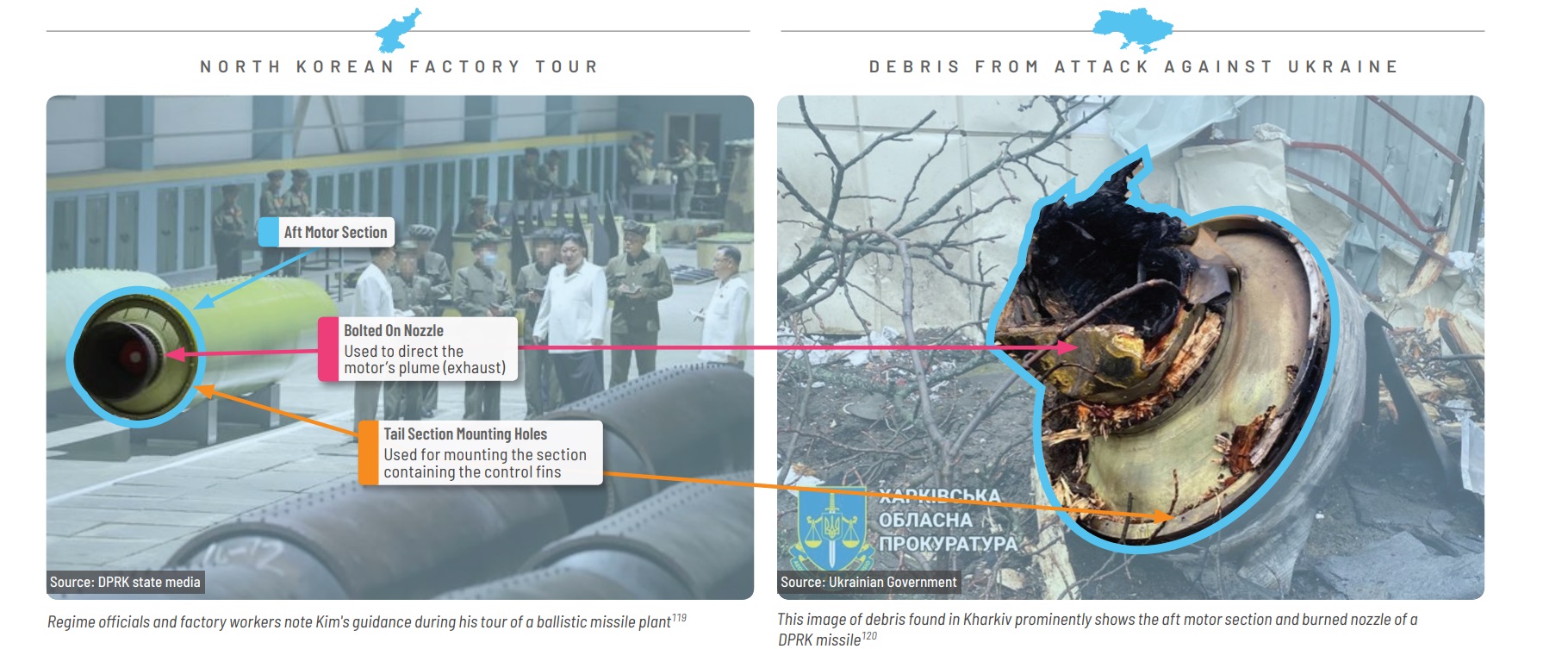
The aft motor section of a North Korean system depicted on the left aligns with the physical traits evident in the missile debris on the right.
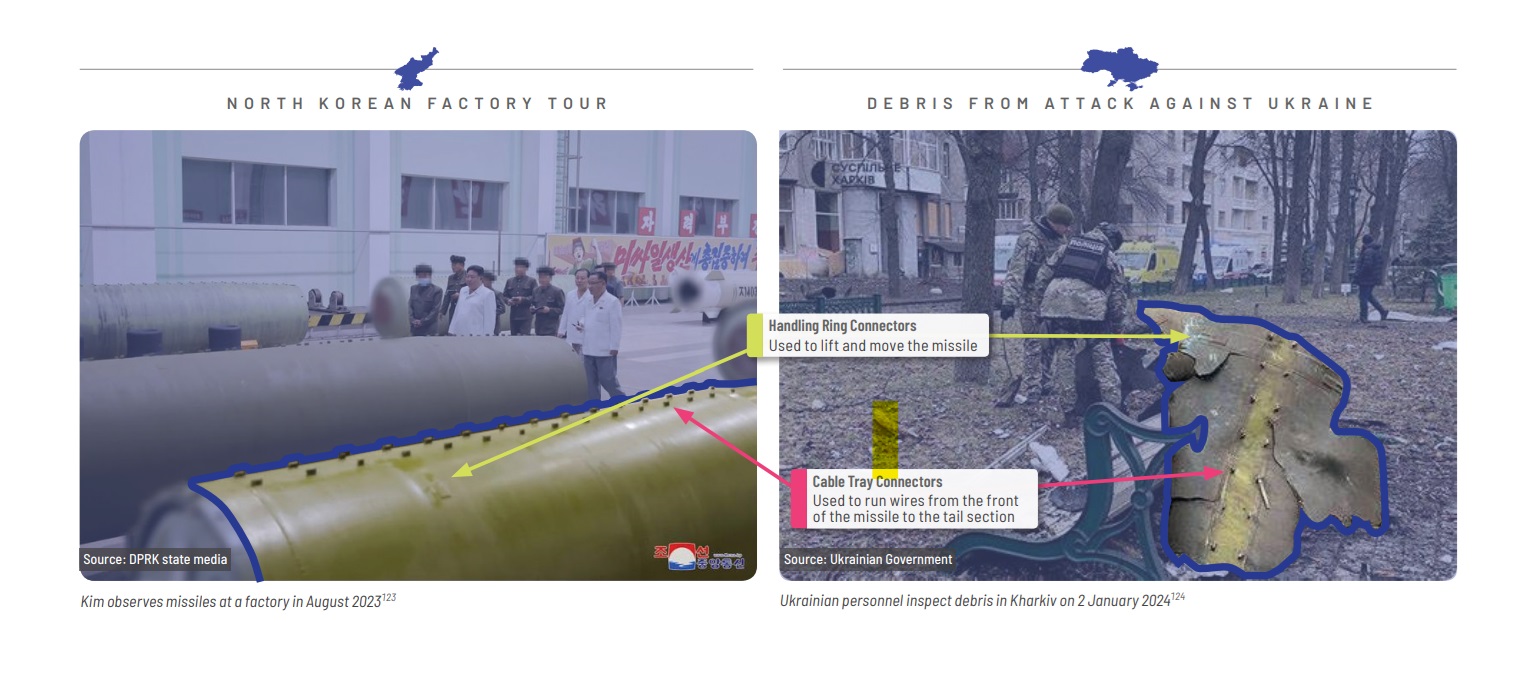
The dimensions of the cable tray and handling ring connectors depicted in the image from North Korean state media on the left closely match those found in the missile debris retrieved from the Kharkiv attack on January 2, as illustrated on the right.
North Korea’s Illicit Missile Proliferation
Moreover, throughout the history of North Korea’s missile program, Pyongyang has been actively involved in the sale of ballistic missile technology to various countries, including Burma, Iran, Libya, Syria, and Yemen. This involvement underscores North Korea’s role as a significant player in the global arms trade.
The DPRK’s missile program, which began in the 1980s under Kim Il Sung and continued under Kim Jong Il, has seen significant advancements under the leadership of Kim Jong Un.
Emphasizing missile development as a top priority, North Korea has demonstrated its ability to produce advanced missile systems capable of targeting regional and intercontinental locations, posing a significant threat to international security.
Putin & Kim Jong-Un To Meet
Putin’s trip reciprocates one Kim Jong-un made last September.
Last year, Kim Jong-un made a rare foreign trip to Russia for a summit with Putin in the Far East, aimed at strengthening the deepening ties between the two nations. Putin’s last visit to Pyongyang was in 2000, shortly after assuming office as the President of Russia, where he met with Kim Jong Il, the father of Kim Jong Un.
Amid heavy Western sanctions imposed on both Russia and North Korea, the two countries have drawn closer together since Moscow initiated its full-scale offensive on Ukraine in February 2022.
As the world watches with bated breath, the impending meeting between Putin and Kim Jong-un takes center stage, portraying a moment of heightened tension and strategic maneuvering on the global stage.
With both leaders wielding nuclear arsenals and known for their authoritarian rule, their rendezvous symbolizes a critical juncture in international geopolitics. As these two despots prepare to huddle, the world braces for the implications of their next moves on the global chessboard.
- Shubhangi Palve is a defense and aerospace journalist. Before joining the EurAsian Times, she worked for E.T. Prime. In this capacity, she focused on covering defense strategies and the defense sector from a financial perspective. She offers over 15 years of extensive experience in the media industry, spanning print, electronic, and online domains.
- Contact the author at shubhapalve (at) gmail (dot) com.



